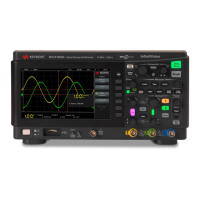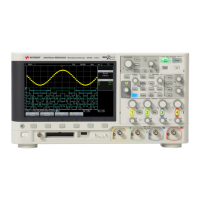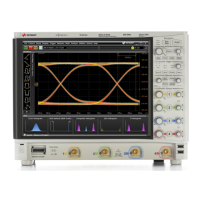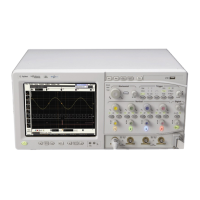Reference 24
Keysight InfiniiVision HD3-Series Oscilloscopes User's Guide 309
To view the currently installed software and firmware press [Help] > About
Oscilloscope.
Once you have downloaded a firmware update file, you can place it on a USB
storage device and load the file using File Explorer (see
"File Explorer" on
page 277), or you can use the Instrument Utilities page of the oscilloscope's web
interface (see "Instrument Utilities" on page 301).
Binary Data (.bin) Format
The binary data format stores waveform data in binary format and provides data
headers that describe that data.
Because the data is in binary format, the size of the file is approximately 5 times
smaller than the ASCII XY format.
If more than one source is on, all displayed sources will be saved, except math
functions.
When using segmented memory, each segment is treated as a separate waveform.
All segments for a channel are saved, then all segments of the next (higher
numbered) channel are saved. This continues until all displayed channels are
saved.
When the oscilloscope is in the Peak Detect acquisition mode, the minimum and
maximum value waveform data points are saved to the file in separate waveform
buffers. The minimum value data points are saved first; then, the maximum value
data points are saved.
BIN data - using
segmented
memory
When saving all segments, each segment has its own waveform header (see
"Binary Header Format" on page 310).
In BIN file format, data are presented as follows:
• Channel 1 data (all segments)
• Channel 2 data (all segments)
• Channel 3 data (all segments)
• Channel 4 data (all segments)
• Digital channel data (all segments)
• Math waveform data (all segments)
When not saving all segments, the number of waveforms is equivalent to the
number of active channels (including math and digital channels, with up to seven
waveforms for each digital pod). When saving all segments, the number of
waveforms is equal to the number of active channels multiplied by the number of
segments acquired.
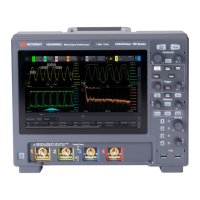
